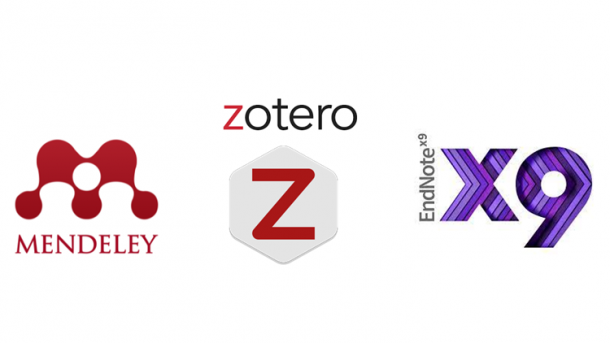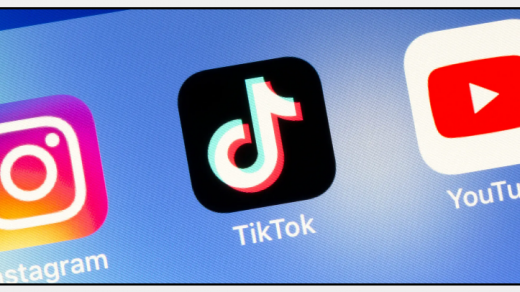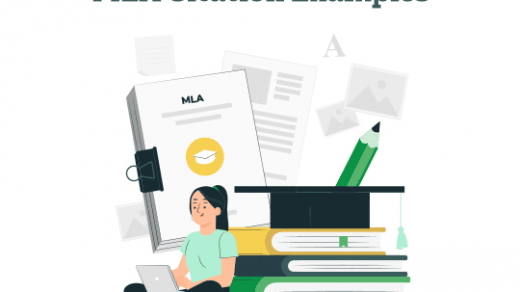In the twenty-first century, research and scholarship increasingly depend on digital tools for managing, organizing, and formatting information. As academic writing grows more data-intensive and interdisciplinary, students and scholars face new challenges in maintaining citation accuracy and stylistic consistency. The Modern Language Association (MLA) format remains one of the most widely used citation systems in the humanities, demanding precision, clarity, and uniformity across diverse types of sources. Yet, with the explosion of digital media and online publications, adhering to MLA rules manually can be time-consuming and prone to error.
This challenge has given rise to citation management tools such as Zotero, EndNote, and Mendeley, which help researchers collect, organize, and cite sources automatically. These platforms promise to save time and reduce mechanical work, but they are not infallible. Each tool has its strengths and weaknesses, and automated formatting can sometimes conflict with MLA’s nuanced rules. This essay examines how these tools interact with MLA style, analyzes their advantages and limitations, and offers practical guidance for avoiding common mistakes. It also considers how automation influences ethical and academic practices in citation management.
Technology and the Changing Nature of Citation
The evolution of citation practices mirrors the broader history of scholarship itself. In the pre-digital era, researchers painstakingly recorded bibliographic details by hand, consulting printed style manuals for every comma and italic. The rise of online databases, digital libraries, and open-access journals has since transformed this process, making it possible to extract citation data with a single click. Tools such as Zotero, EndNote, and Mendeley emerged to streamline this workflow, automatically formatting entries in hundreds of styles—including MLA, APA, and Chicago.
Zotero, developed by the Roy Rosenzweig Center for History and New Media, revolutionized access to citation management by offering a free, open-source platform. It integrates directly into browsers, allowing users to capture metadata from online sources such as JSTOR, Google Scholar, and library catalogs. Its group libraries and tagging functions also support collaboration and data organization—features particularly valuable in interdisciplinary research.
EndNote, a commercial product by Clarivate, caters to professional and institutional researchers. Its customization options allow users to create or modify citation templates and manage extensive bibliographies with great precision. Because it integrates with major databases, EndNote is favored by advanced scholars and academic publishers, though its steep learning curve and cost make it less accessible to undergraduates.
Mendeley, developed by Elsevier, bridges reference management with academic networking. It combines citation storage with a social research platform, enabling users to share sources, annotate PDFs, and discover new studies through algorithmic recommendations. Its interface is intuitive, but its citation templates—particularly for MLA—can lack flexibility and occasionally misformat elements such as author names, container titles, and capitalization.
While these tools enhance productivity, they are not immune to errors. MLA style, especially in its ninth edition, emphasizes adaptability to new media forms—films, websites, podcasts, and digital archives—that often defy rigid templates. Consequently, automated citation software must be carefully supervised to avoid inaccuracies that compromise scholarly integrity.
To understand how these tools differ in performance, usability, and MLA compatibility, the following table summarizes their core characteristics.
Comparison Table: Zotero, EndNote, and Mendeley
| Feature | Zotero | EndNote | Mendeley |
|---|---|---|---|
| Cost and Access | Free, open-source | Paid license (institutional) | Free basic plan; owned by Elsevier |
| Ease of Use | Very user-friendly | Complex but highly customizable | Intuitive, social features |
| MLA 9 Accuracy | High with manual verification | Excellent when updated | Moderate; frequent manual fixes |
| Customization | Strong (editable CSL files) | Advanced (template editor) | Limited flexibility |
| Integration with Word Processors | Seamless (Word, Google Docs) | Excellent (Word, Pages) | Good (Word plugin) |
| Collaboration Options | Group libraries, open sharing | Restricted, local sharing | Cloud collaboration |
| Data Privacy | Local or cloud storage | Local/Institutional servers | Cloud-based; data concerns |
| Best For | Students, humanities scholars, open collaboration | Experienced researchers, large projects | Early-career academics, social networking |
This comparison reveals that Zotero excels in accessibility and collaborative potential, EndNote dominates in precision and customization, and Mendeley balances usability with social integration—though at the cost of data transparency. Each tool embodies a distinct philosophy of digital scholarship. Zotero’s open-source model aligns with academic inclusivity and community-driven development. EndNote represents institutional rigor and technical sophistication. Mendeley reflects the modern trend toward networking and research visibility. However, none of these tools fully eliminate the need for user awareness of MLA’s stylistic nuances.
Challenges and Common Mistakes
Although citation management tools simplify the mechanics of referencing, their reliance on metadata creates vulnerabilities. Most tools extract bibliographic data from databases or websites, but such data is often incomplete, inconsistent, or formatted differently from MLA requirements. For instance, an online article might list a corporate author instead of an individual one, omit a publication date, or capitalize titles incorrectly. When imported into Zotero or Mendeley, these discrepancies are reproduced automatically.
One of the most frequent errors concerns container formatting, a key principle of MLA style. MLA requires that works within larger collections—such as a poem in an anthology or a film on a streaming service—include both the individual work and the larger container. Citation tools sometimes omit or misplace this information, resulting in incomplete references. Similarly, tools often struggle with digital object identifiers (DOIs), URLs, or access dates, which MLA uses flexibly depending on source type.
For example, Zotero may omit the “Accessed” date for web sources, while Mendeley may automatically insert a DOI even when the style guide does not require it.
Another recurring problem involves capitalization and italics. MLA uses headline-style capitalization for titles and italicizes container names. Automated citations may instead use sentence case or misapply italics. The difference between The Great Gatsby and the great gatsby may seem minor, but it violates MLA standards and reflects poorly on academic rigor.
A subtler but equally important issue is overreliance on automation. Many students assume that citation tools are authoritative and require no verification. Yet style guides evolve, and software developers may take months to update templates. Consequently, users who depend solely on generated output risk submitting bibliographies that follow outdated or incorrect formatting. This overconfidence undermines the educational purpose of citation, which is not merely to list sources but to demonstrate understanding of intellectual accountability.
Lastly, ethical concerns arise from data privacy and source transparency. Mendeley, for example, stores users’ libraries on cloud servers operated by Elsevier, prompting debate about academic data ownership. Moreover, copying automatically generated citations without verification can lead to unintentional plagiarism, especially if metadata misidentifies an author or misattributes content.
Practical Strategies and Ethical Use
Despite their limitations, citation management tools can be powerful allies when used thoughtfully. The key lies in balancing automation with human oversight. Several best practices help ensure accuracy and maintain alignment with MLA standards.
Verify metadata manually. Before trusting any imported record, check core elements: author name order, capitalization, publication date, container titles, and access information. Comparing the output against examples in the MLA Handbook or the MLA Style Center online ensures correctness. Users should also verify that their citation style file reflects the MLA 9th Edition, which introduced updates for digital and multimedia sources.
Customize and edit templates. Zotero and EndNote allow users to edit citation style language (CSL) files or output templates. Advanced users can modify fields to correct spacing, punctuation, or italics. This customization is particularly valuable for institutions that enforce specific formatting nuances.
Integrate manual and digital workflows. Rather than viewing software as a replacement for learning citation rules, researchers should treat it as an aid. For example, generating a first draft of references with Zotero, then manually editing them for precision, yields both efficiency and correctness. Such hybrid methods cultivate awareness of MLA’s underlying logic.
Organize notes and tags for context. Citation tools can double as research databases. By attaching annotations or keywords, users can trace themes, arguments, and intertextual connections across sources—enhancing critical thinking and organization. This practice not only improves citations but strengthens the research narrative itself.
Back up and sync libraries securely. Data loss can jeopardize months of work. Zotero and Mendeley offer cloud synchronization, while EndNote supports local backups. Exporting libraries as RIS or BibTeX files ensures portability across systems and prevents loss due to software errors or institutional restrictions.
Use group libraries responsibly. Collaborative projects benefit from shared libraries, but all contributors should follow consistent formatting practices. Group moderators can establish verification steps to maintain uniformity across citations, avoiding discrepancies in shared bibliographies.
Ethical awareness remains central. Citation tools must never substitute for intellectual honesty. Users should understand the principles of attribution, especially when citing secondary summaries, paraphrases, or translated materials. Ethical use also includes recognizing software limitations—acknowledging that citation accuracy is ultimately the researcher’s responsibility.
Conclusion
The integration of citation management tools like Zotero, EndNote, and Mendeley into modern scholarship represents a transformative moment in the relationship between technology and academic writing. These platforms embody both the promise and the peril of automation. On the one hand, they streamline the process of collecting, formatting, and organizing references, liberating scholars from the mechanical burden of punctuation and spacing. On the other hand, their reliance on imperfect metadata and generic templates exposes users to subtle but significant errors, particularly when dealing with the nuanced conventions of MLA style.
The future of academic citation depends not on rejecting automation but on using it responsibly. The best outcomes emerge when digital efficiency is balanced by human judgment—when researchers verify, interpret, and correct what software produces. This hybrid approach preserves the intellectual discipline that underlies scholarly writing while taking advantage of technological innovation.
Ultimately, citation is more than a technical requirement; it is an ethical act that expresses respect for others’ ideas and the integrity of one’s own scholarship. Whether through Zotero’s collaborative openness, EndNote’s professional precision, or Mendeley’s social connectivity, each tool offers a different path toward that goal. By learning to navigate their possibilities and limitations, researchers can ensure that the digital tools designed to support scholarship remain servants of accuracy, not substitutes for understanding.




